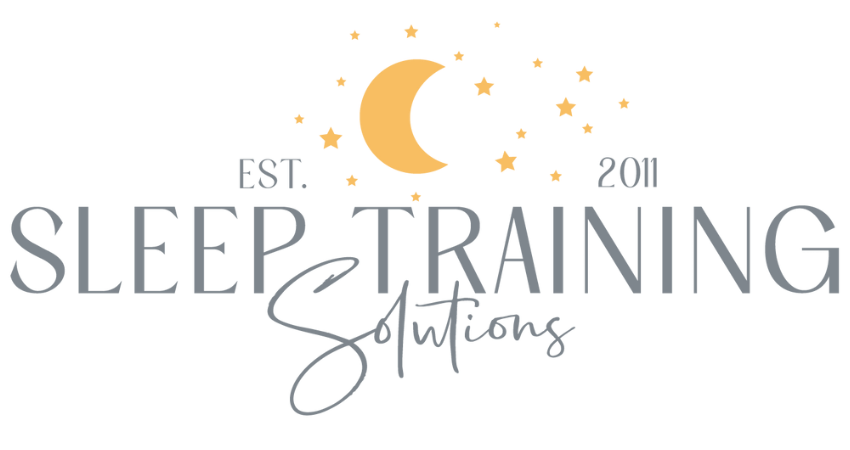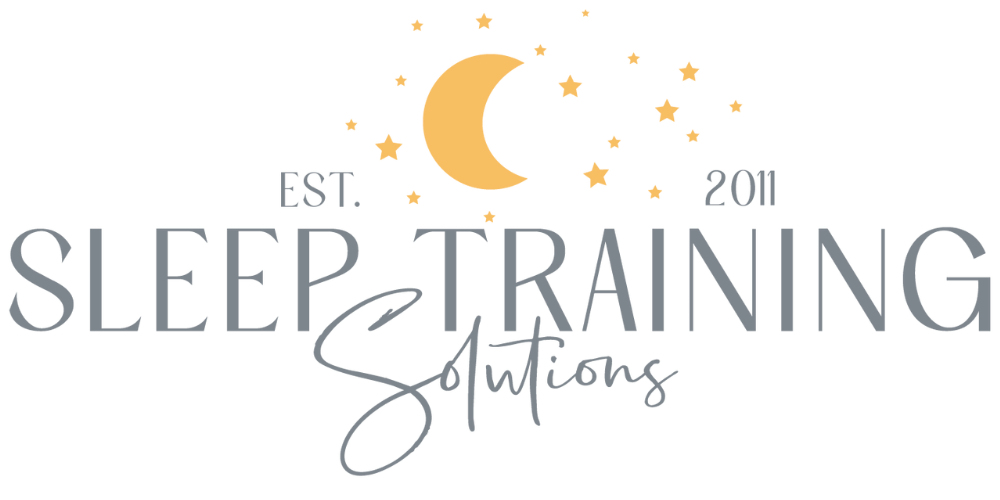Proven Baby Sleep Essentials for Parents Struggling With Sleep Training
What do I need to get my baby to sleep through the night?
If you’ve been hanging around my little corner of the internet for more than five minutes, you know my mantra: equipment supports sleep; it doesn’t create sleep. Think of bedtime gear as the stage crew. A great crew can build a cozy, distraction-free set, but the show still falls apart if the star (your child) never learned their lines—aka the skill of falling asleep independently and soothing back to sleep between sleep cycles.
That said, I’ve worked with hundreds of babies and toddlers who started sleeping better once the right pieces were in place. Below is the list I share with my 1-on-1 coaching families—tried-and-true items that make a real difference when paired with consistent routines and independent sleep skills. If you're trying to figure out what’s actually worth buying and what’s just hype, here’s where I’d start.
Sound Machines: Block Out Noise, Not Sleep
Why they help:
A steady, unchanging white noise helps drown out household sounds like older siblings, doorbells, creaking floors, barking dogs, and dad’s loud sneezes!—things that love to interrupt naps.
It creates a calm, consistent background that helps signal it’s time for sleep without giving the brain anything specific to focus on.
What to look for:
I only recommend plain, continuous white or brown noise—no music, no waves, no rain, no bird sounds. Anything with rhythm, variation, or melody can actually stimulate the brain rather than quiet it. And water sounds? I’ve seen them cause confusion during potty training more often than not, so they’re a hard pass in my book. (Have you ever run the faucet to get your child to pee? IYKYK)
Pro tip: Look for a machine that plays non-looping, static noise with adjustable volume. Keep it under 50 dB and place it across the room—not right next to the crib—for safe and effective sound support.
✅ Here are my favorite white noise machines:
Best standalone white noise machine
Best travel white noise machine - this has other sounds (just use one of the six white noise options!)
Best white noise/toddler clock combo - if you don’t want two pieces of gear!
Blackout Curtains: Because Light Sends the Wrong Message
Why they help:
Darkness cues the pineal gland to release melatonin, our body’s natural sleep hormone.
Babies and toddlers are early-morning specialists; even a sliver of sunrise light at 5:15am can shout “Time to party!” [Already have those windows sealed up like Fort Knox and your child is STILL waking at 5am? Grab my Early Wakings Guide for 50% off here!]
Summer evenings stay bright until 8-8:30 p.m. these days—right when our little friends should be falling asleep (or already asleep!) Sunset in Fortuna, ND is around 10pm during the summer months?!
Choosing your MVP:
Opacity over aesthetics. If you can see your hand with the lights off at 2pm on a sunny day, add a stick-on blackout panel or (my cheap, low-tech favorite) a roll of painter’s tape and black garbage bags or aluminum foil.
Velcro side strips or painter’s tape eliminate light leaks along the curtain edges—worth the extra five minutes of DIY.
Thermal lining doubles as an HVAC helper, keeping the nursery within the sweet-spot temperature range of 68-70 °F.
Something to consider: Some toddlers fear pitch-black rooms. In that case, introduce a dim nightlight gradually and at ankle height to keep overhead glare out of sightlines.
✅ Here are my favorite blackout curtain options:
Best 100% blackout curtains that you can easily set up in 10 minutes
Best travel/portable blackout curtain
Best solution I’ve found for keeping the crib dark while room-sharing during travel
Best solution for stopping hallway light from sneaking through door cracks
Wearable Blankets & Sleep Sacks: Safe Cozy Without the Suffocation Risk
Why they help:
Replace loose blankets (a no-go under 12 months) with a zip-up sleep sack (sleeveless) or wearable blanket/sleeping bag (long sleeve) that stays put when they wiggle in their sleep.
Consistency cues sleep: putting on the sleep sack signals “night-night” just like brushing teeth does for adults.
Skip weighted sleep sacks. The American Academy of Pediatrics advises against adding weight to sleepwear; stick to the standard, non-weighted sacks.
Feature checklist:
TOG rating that matches your climate. 0.5 for warm homes, 2.5 for chilly winter nurseries.
Two-way zipper = midnight diaper changes without full undressing.
Armholes after swaddle stage. Once rolling begins (often 12-16 weeks), ditch the swaddle and graduate to an arms-out sack to preserve hip health and roll-over safety. I DON’T recommend buy the sleep sack with arm flaps (that mimic the swaddle).
Bonus for Houdini toddlers: Some sacks come with inverted zippers or snap-over covers—great for kids who treat bedtime like an escape-room challenge. Or just turn the sleep sack around so the zipper is in the back 😉
✅ Here are some great sleepwear options:
100% Cotton 2-way zipper 3 pack - .5 TOG
Bamboo 2-way zipper sleep sack - 1.0 TOG
Organic Cotton Sleep Sack - 1.5 TOG
Humidifiers: Moisture for Better Breathing & Fewer Wake-Ups
Why they help:
Indoor winter air can dip below 30% humidity, drying nasal passages and leading to congestion or mouth-breathing (all sleep disrupters).
Slightly humid air keeps skin from itching and lips from cracking—tiny discomforts that add up to big wake-ups.
Choosing a winner:
Cool-mist ultrasonic models are safest for kids (no burn risk).
An easy-to-clean tank is more important than extra features or lighting. A humidifier that’s hard to clean is more likely to grow mold—and that’s the last thing you want in a baby’s room.
Aim for 40-50% humidity. Anything higher becomes a petri dish for dust mites.
✅ Here are two options I recommend:
Easy to clean, cool mist humidifier
Room thermometer and humidity meter for bedroom
Nightlights: From Fear-Busters to Early-Bird Tamers
Why they help:
Around 18-24 months, imaginations bloom—sometimes into monsters under the bed. A dim, red-hued nightlight can reassure without sabotaging melatonin.
For preschoolers, a “green means go” clock doubles as a nightlight and an early-wake traffic signal: red/orange before the preset time, green when it’s okay to leave the room.
Pro settings:
Under 4 lux (roughly the brightness of a full moon). If you can read a book, it’s too bright.
Red or amber LEDs minimize blue-light emission.
Timer or dimming feature allows you to taper down the brightness as fears diminish.
✅ Here are two options I recommend:
Low blue light night lights 2-pack - NOT motion sensor activated, but has a dusk to dawn sensor
Toddler clock/white noise/night light combo
Other items
Dimmable light switch or lamp: Great for keeping the bedtime routine calm and avoiding harsh overhead lights during pajamas, books, or last feed. But remember, this isn’t to set the mood for drowsiness—you want to keep your child FULLY awake during the bedtime routine!
Crib fan (for air circulation): Not a necessity for everyone, but helpful for rooms that get stuffy. Proper airflow can support safer sleep and more comfortable rest.
Extra crib sheets + waterproof pads: Not glamorous, but very real-life. Layering a crib with two sets of sheets and pads means you can peel one off at 2am if there’s a blow out or leaky diaper and still have a fresh one underneath—no full remake needed.
Great bedtime books you book enjoy! Here is my list of favs.
👉 List of the Best Bedroom Gear for Your Child
buying tip: That link will be updated with any discounts and sales!
Putting It All Together: Your 5-Step Sleep Environment Checklist
Noise: Consistent, steady white noise under 50 dB. (There are free decibel meter apps on your phone.)
Light: Room dark enough that you can’t see more than outlines, plus a red-tone nightlight only if needed.
Temperature: 68-70°F, humidity 40-50%.
Safety & Comfort: Sleep sack/wearable blanket with appropriate TOG and crib free of loose items.
Routine Cues: Same bedtime routine sequence each night—bath, PJs/sack, feed, book, cuddle, into crib awake.
Follow those five and you’ve done 90% of the environmental heavy lifting. The remaining 10%? Teaching your child how to drift off independently at bedtime and how to stitch sleep cycles together at 2am without your intervention.
“Do I Need All This Gear for My Baby to Sleep?”
Short answer: no.
Perfectly dark caves existed long before Amazon Prime. But in our modern, stimulus-rich homes (hello doorbells, smartphones, LED streetlights), the right gear levels the playing field. Think of equipment as bumpers on a bowling lane: helpful for steering the ball where you want it to go, but the bowler still throws the ball.
Troubleshooting With Gear—Common Scenarios
Baby falls asleep fine but wakes after 30 minutes
White noise too quiet or shuts off < 60 min?
Room too bright?
Practice placing baby down awake; extend wake window slightly.
Toddler wakes at 5am singing
Curtains letting dawn light in?
Nightlight set too bright?
Is bedtime at the right time?
And many more things to consider (My Early Wakings Guide has the full list!)
Frequent wake-ups during a cold
Humidity below 35%?
Room colder than 67-68°F or warmer than 72°F?
Offering extra fluids during day?
Avoid rocking to full sleep if that isn’t your norm
Ready to Go Deeper?
You can absolutely assemble this sleep environment on your own. But if you’ve checked every box and your little one is still splitting your nights into snack-sized chunks, that’s your sign to look below the surface. Maybe your baby never got the chance to practice self-soothing, or your toddler relies on a parent as their human pacifier. That’s where I come in.
These tools support good sleep—but if you’re still struggling, let’s talk about what’s going on behind the scenes.
Book a free 15-minute evaluation call to see whether 1-on-1 coaching is a good fit for your family!
The Baby Sleep Products That Actually Work
There are so many pieces to successfully sleep training - Download your free PDF and get weekly sleep tips to help set you up for success!
Related Posts:
This post is for informational purposes only and may not be the best fit for you, your child and/or your personal situation. It shall not be construed as medical advice. The information and education provided here is not intended or implied to supplement or replace professional medical treatment, advice, and/or diagnosis. Always check with your child’s physician or medical professional before trying or implementing any information read here.
Sleep Training Solutions is a participant in the Amazon Services LLC Associates Program, an affiliate advertising program designed to provide a means for sites to earn advertising fees by advertising and linking to Amazon.com and affiliated websites. I will earn a small commission, at no additional cost to you, if you purchase them.






